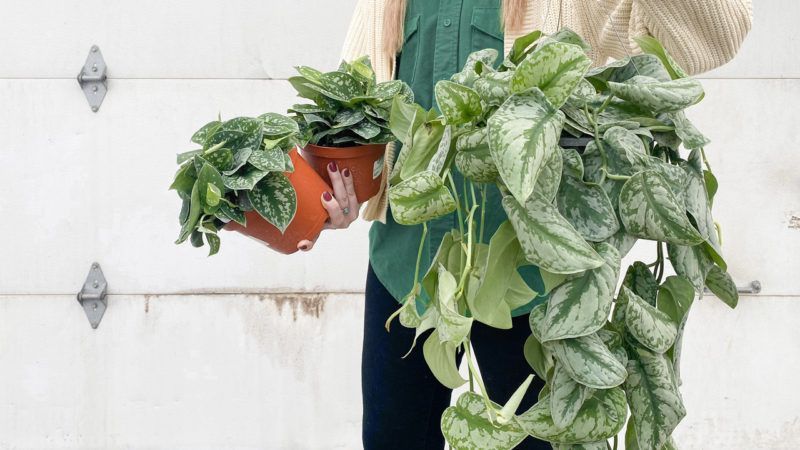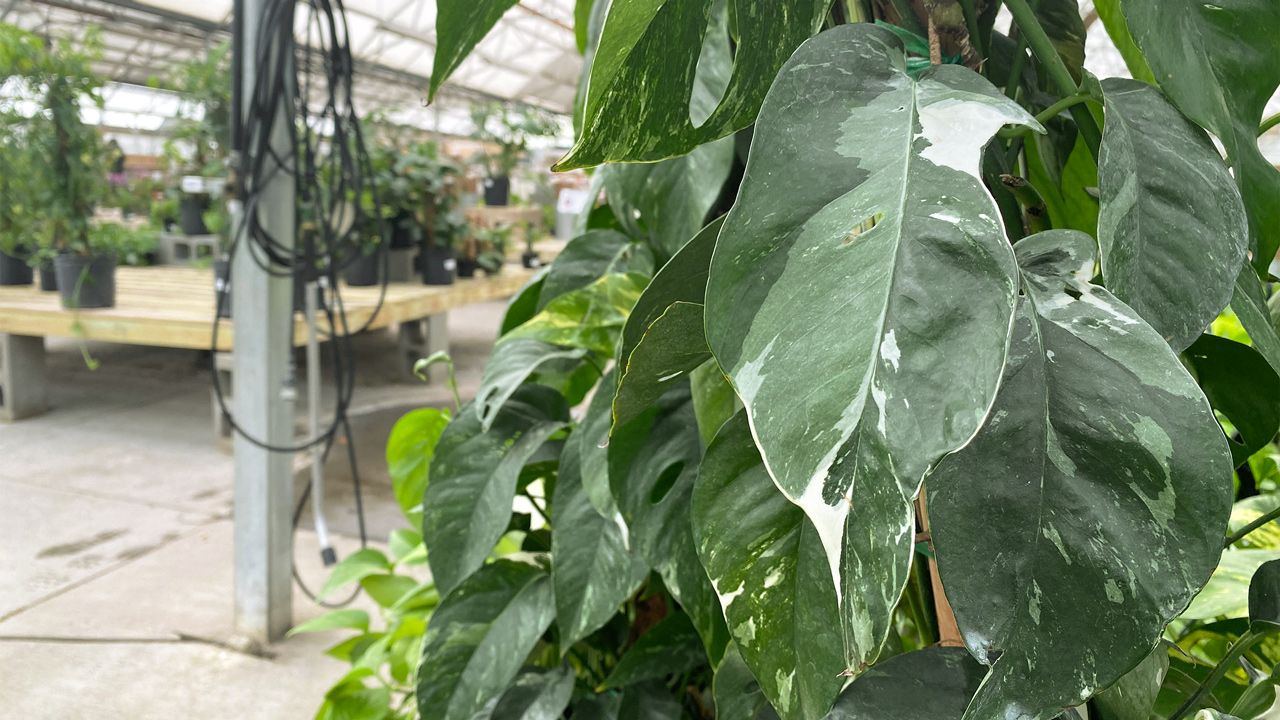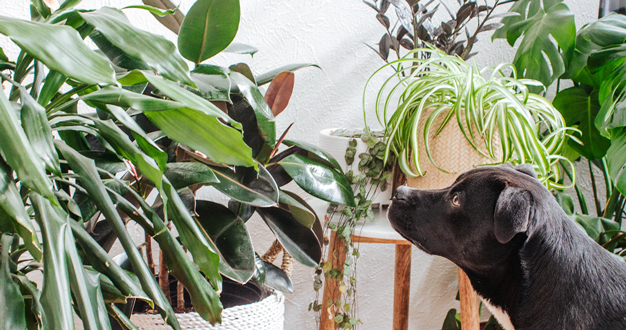
Whether in the genus Epipremnum or Scindapsus, the houseplants we call pothos are beautiful, versatile, and patient with all kinds of care. They’re a favorite with both new plant parents and seasoned collectors alike, and here we have a few tips to keep these plants thriving.

Light
Pothos, scindapsus, and epipremnum all thrive in bright, indirect light. And while they’ll tolerate low light – even fluorescent light – to maintain regular growth and beautiful variegation, bright indirect light is best.
Water
Water when the soil is almost dry. Slight drooping is a good sign it’s time for a drink.
Soil
Use a well-draining houseplant potting mix. Our favorite potting medium is an equal mix of potting soil, perlite, and orchid bark. Also, make sure to pot in a pot with a drainage hole.

Environment
Pothos and scindapsus enjoy humidity in the air but can easily adapt to drier environments too. If outdoors, set these plants in a shady location and bring them inside when temperatures drop below 50 degrees.
Fertilizer
Feed twice a month while actively growing with a balanced fertilizer for houseplants. Our favorite is a fertilizer with a 9-3-6 NPK ratio.
Propagation
Both pothos and scindapsus propagate easily from stem cuttings in water. When the roots are a few inches long, transplant them to a small pot with moistened potting mix.

Toxicity
All parts of pothos and scindapsus contain calcium oxalate crystals which can irritate the mouth and digestive tract if ingested. Keep away from children and pets.

Additional Tips
- A pothos’ and scindapsus’s fast growth and trailing habit make them both a perfect plant to train to a trellis or moss pole. The lengthy vines can also be guided along the wall with hooks or left to cascade naturally off a shelf or mantel.
- Although these plants can tolerate low light, variegated varieties may lose some of their coloration. Move to a brighter location to restore the spots and patterns.
Epipremnum vs. Scindapsus
Pothos is a common name used to describe several houseplants, mostly in the genus Epipremnum – but a few can be found in the genus Scindapsus too. What’s the difference? Not much, actually. The botanically significant difference is in the flower structure – pothos in the genus Scindapsus have a single ovule in each of their ovaries, while those classified in the genus Epipremnum have multiple. Not something the average plant owner is going to notice. Visually, however, while both genus show the same stem and foliage structure and thrive under the same care, plants in the genus Epipremnum tend to be glossier in appearance and offer variegations in an array of creamy stripes, spots, and speckles. Pothos in the genus Scindapsus have slightly thicker foliage and are famous for the ethereal satin sheen and silvery variegations that cover their leaves and stems.
“If you’d like to explore a creative way to showcase your plants, join our upcoming Kokedama Workshop and learn how to craft beautiful moss ball planters”.


